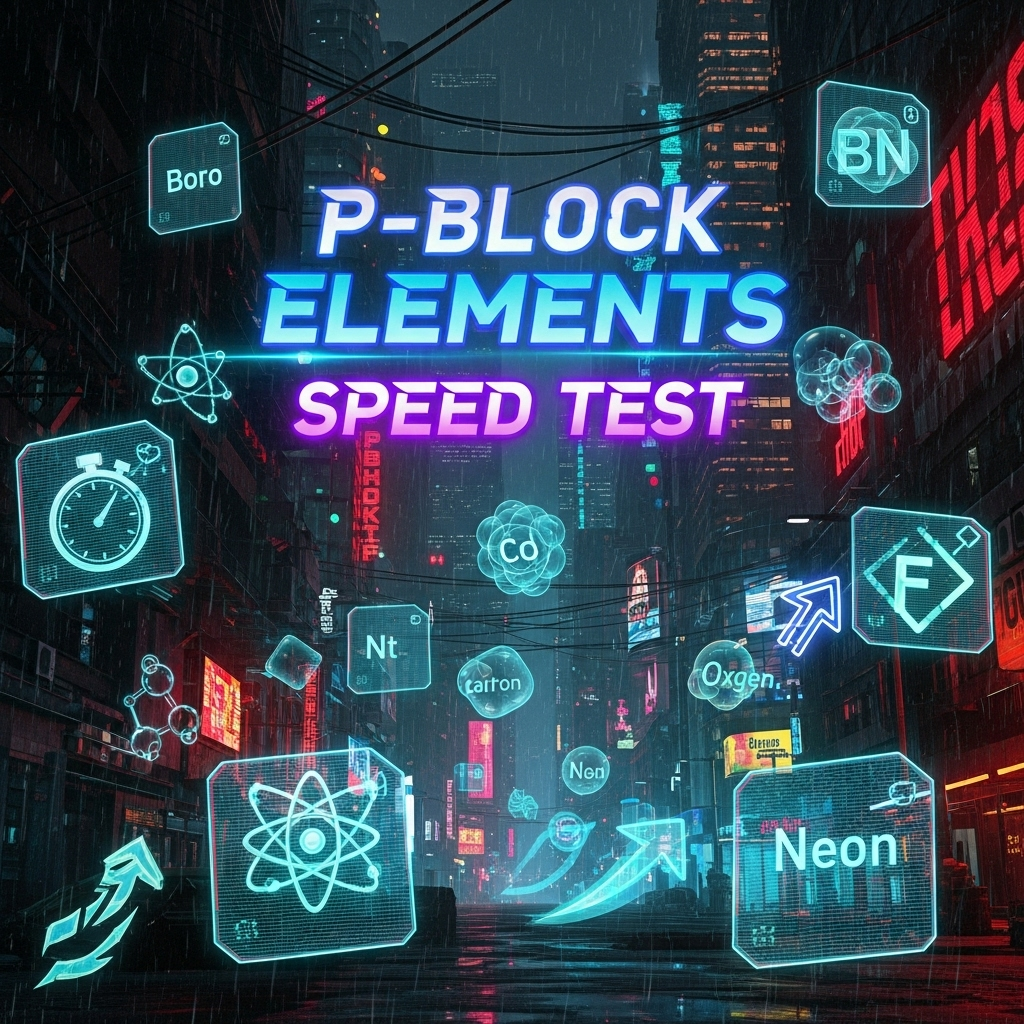P-Block Elements – Interactive Quiz & Cheatsheet
Learn the properties, reactions, and compounds of P-block elements in a fun way
Updated: 3 months ago
Categories: Mini Game, Chemistry, Class 11, Inorganic Chemistry

P-Block Elements Cheatsheet
Key Concepts & Characteristics
- Definition: P-block elements are from groups 13 to 18 in the periodic table.
- Valence Electrons: These elements have their valence electrons in p orbitals.
- Groups: Includes Boron family, Carbon family, Nitrogen family, Oxygen family, Halogens, Noble gases.
- General Properties: Diverse properties ranging from metals to nonmetals and inert gases.
- Oxidation States: Variable oxidation states, often showing +3, +5, -3, etc.
- Important Compounds: Oxides, halides, hydrides with unique acidic/basic properties.
- Reactivity: Reactivity decreases down the group for Halogens, increases for Noble gases.
- Electron Configuration: Outer electronic configuration is ns2 np1-6.
- Uses: Wide applications in industry, medicine, and materials science.
- Trends: Atomic size, electronegativity, ionization energy vary predictably across the block.
Quick Reference Table
| Group | Characteristics | Example Elements |
|---|---|---|
| Group 13 (Boron Family) | 3 valence electrons, metallic character increases down the group | B, Al, Ga, In, Tl |
| Group 14 (Carbon Family) | 4 valence electrons, forms covalent bonds, allotropy present | C, Si, Ge, Sn, Pb |
| Group 15 (Nitrogen Family) | 5 valence electrons, exhibits multiple oxidation states | N, P, As, Sb, Bi |
| Group 16 (Oxygen Family) | 6 valence electrons, generally chalcogens, reactive nonmetals | O, S, Se, Te, Po |
| Group 17 (Halogens) | 7 valence electrons, very reactive nonmetals | F, Cl, Br, I, At |
| Group 18 (Noble Gases) | 8 valence electrons (except He), inert gases | He, Ne, Ar, Kr, Xe, Rn |
Study Advice
Understand Trends: Focus on how properties like atomic radius and reactivity change down the groups.
Group Characteristics: Learn unique properties and reactions of each group.
Practice Compounds: Memorize important compounds and their behavior.
Solve Questions: Practice writing electronic configurations and oxidation states.
Visual Aids: Use periodic tables and block diagrams for better retention.
P-Block Elements Quick Tips
- Valence Shell: ns2np1–6 configuration defines the block.
- Metallic Character: Increases down the group;
- Oxidation States: Commonly +3, +5; decrease/increase depending on group.
- Reactivity: Highly reactive Halogens; inert Noble Gases.
- Allotropy: Present in some elements like Carbon and Phosphorus.
P-Block Elements Quiz
Test your knowledge with 5 questions! You have 30 seconds per question.
Question: 1/5
Time left: 30s
Quiz Complete!
Your Score: 0/5

Group Discussions
No forum posts available.


